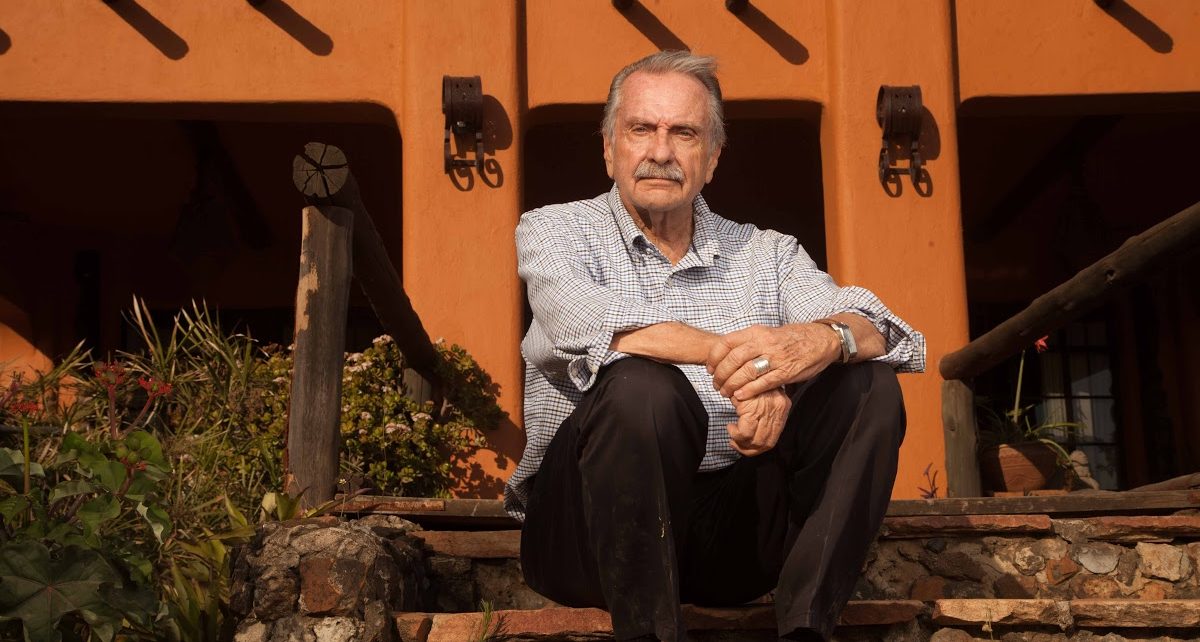Without a wife, mpango or children, the country’s most avid art collector was survived by the African Heritage House in Mlolongo
By Undercover Reporter
Were he not born in a wheat plantation in Colorado, USA, Alan Donovan would have been a Turkana boy-if he had leeway in selecting ancestors.
And after over 50 years in Kenya, death, as it does to all men, finally came to Donovan last Sunday when he closed his gate in his sleep. He was 83.
Without a wife, mpango or children, the country’s foremost art connoisseur was survived by his invaluable art collection and the African Heritage House in Mlolongo, a masterpiece of architectural design that was up for sale. Asking price, Sh300 million for three floors fashioned after the Malian mud mosque design he so loved, a swimming pool, the wondrous view of Nairobi National Park for your eyes only. Why don’t Kenyans care about views?
Donovan came down these shores after leaving West Africa in a battered Beetle in 1969, the year the Internet was created, and majority of Kenyans holed up in round, mud walled thatch roof huts. See, mabati had to be imported. Those doing well like chiefs, headmasters, successful merchants, built timber houses roofed with drum cut-offs. Blame it on cultures and their proclivity for building typologies from local trends, available materials, the environment.
Most residential houses in Kenya star copy cat designs in 40 by 80 plots, with a grave size backyard for beer parties
Kenyans still deem stone houses with tiled roofs as the epitome of creature comforts and insignia of financial windfall. Drably though, most residential houses in Kenya star copy cat designs crammed inside 40 by 80 plots, with one car port and grave size backyard for beer parties. Some screaming house colour regimes resemble kindergarten walls.
Petrol station and Go Down too have designs of bumpless similarity. The most curious are lookalike townships allover rural Kenya-with a rickety long-drop toilet at the back corner, door held by faith and rusty nails facing shrubs-often turned into tissue paper!
But Donovan altered architectural perceptions when he used African traditional mud walls as the inspiration for his flat-roofed African Heritage House, widely considered the most iconic private home in Africa.
Murumbi died and was buried in 1990 at City Park, Nairobi, next to Pio Gama Pinto
Anyway, let us go back to 1969 when one political event irrevocably rooted Donovan’s stay in Africa: the election of Richard Nixon as America’s 37th President- the only one in history to be impeached, ignobly resign in office.
Not agreeing with Nixon’s policies, Donovan resigned from the US State Department while in Nigeria during the Biafra War. Biafra Estate, Eastleigh, was named after that Secessionist State. With time on his hands, he gassed his Beetle across the Sahara, arriving here via Turkana in 1970. On seeing Turkana artifacts, Donovan- the man who considered himself white on skin and black in soul- sold the Beetle, bought everything on display.
Purchasing Turkana artifacts saw him mount an exhibition at Studio 68 where Kenya’s former Vice President Joseph Murumbi was the only African, a half Goan in attendance. The chance meeting was another turning point.
African Heritage Gallery was the back Alan Donovan rode his name, fame, fortune, immortality
Like Donovan, the Murumbis had no children. Their combined effort in African art and textile collection marked the creation of the largest Pan-African gallery in the continent, the African Heritage Gallery on whose back Alan Donovan made his name, fame, fortune, immortality.
Indeed, it was in Africa that Donovan found a home: “I consider myself an African more than American, I chose African,” he once said. “I have been here for so long it’s hard not to identify myself as one.” There are many things Donovan loved about Africa which he said “has overwhelming beauty, the land, the people, the music, the history, the cultures and the craft. But the one true gift of Africa is its textile.”
The African Heritage closed shop in 2003. Leftover art was kept at the African Heritage House. Murumbi died and was buried in 1990 at City Park, Nairobi, next to Pio Gama Pinto. The Murumbi art collection was later sold to the Kenya National Archives, others are found at the Nairobi Gallery along Kenyatta Avenue. Sheila followed suit in 2000 and was buried next to Murumbi and Pinto.
The last man standing in the art collection triumvirate was Alan Donovan. He will be buried at the African Heritage House on December 13, 2021.

